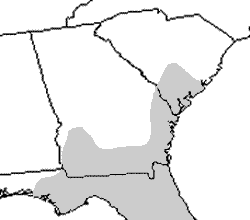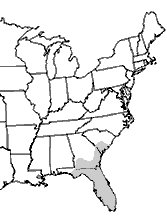Dwarf Siren (Pseudobranchus striatus)


Photos by J.D. Willson unless otherwise noted
Description: The Dwarf Siren (Pseudobranchus striatus) is the smallest of the three sirens found in our region, ranging from 4 – 6 in (10-15 cm). The Dwarf Siren has external gills, three toes on its front legs, and lacks hind limbs. The head is triangular and delicate, the tail is laterally compressed, and the body is slender. Five subspecies occur over its range and vary in distribution and color patterns, but most have at least faint stripes along the sides.
Range and Habitat: The Dwarf Siren is found throughout Florida and in the Coastal Plain of southern Georgia and South Carolina. This species is often with water hyacinth and found is the shallow, weedy water of ponds, swamps and ditches. Due to its association with the exotic plant, its range may be extending northward.
Habits: Although totally aquatic, the Dwarf Siren is sluggish. A nocturnal creature, the siren feeds on tiny invertebrates it finds among plant debris near the bottom of the water. Not much is known about the reproductive tendencies of this species other than the fact that eggs are laid one at a time in spring attached to aquatic vegetation and hatch in approximately one month. It is assumed that fertilization is external. The siren is able survive periods of drought by burrowing into the muddy substrate and forming a cocoon of mucus and shed skin. Because it its secretive habits, little is known about the ecology of this species.
Conservation Status: Although listed as a species “Of Special Concern” in South Carolina, the Dwarf Siren is listed as non-threatened by both Georgia state law and federal law.
Account Author: Geoffrey Bailey, University of Georgia – edited by J.D. Willson
